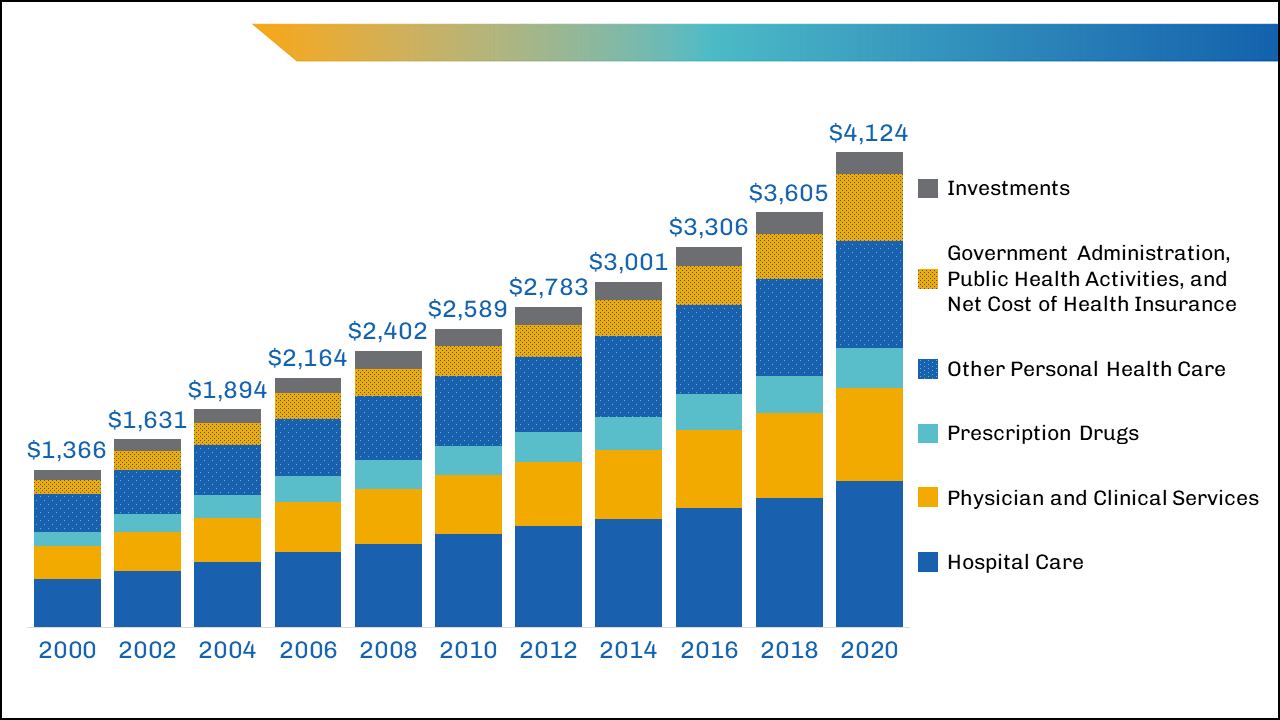Why Healthcare RCM is Necessary for Financial Wellness in Medical Practices
A Comprehensive Overview on How Medical Care RCM Functions to Streamline Payment and Collections
Navigating the intricacies of healthcare income cycle management (RCM) is essential for companies aiming to enhance their invoicing and collections procedures. The guide unpacks the details of RCM, from person enrollment to accounts receivable management, providing insights right into maximizing each step.
Recognizing Profits Cycle Monitoring
RCM is an important management feature that encompasses the entire financial process of patient care, from the initial consultation setting to the final payment of the balance. It is a complex procedure made to determine, accumulate, and manage the income from the services provided to clients.
The RCM procedure begins when an individual schedules an appointment and prolongs via the person's treatment trip, consisting of billing and collections. A crucial purpose is to minimize the time between providing a service and receiving repayment, therefore enhancing the organization's monetary health. RCM entails numerous features such as individual enrollment, insurance coverage verification, charge capture, coding, asserts entry, repayment publishing, and taking care of denials and appeals.
Secret Components of RCM
In the realm of Revenue Cycle Monitoring (RCM), understanding its crucial components is essential to accomplishing financial efficiency within healthcare companies. RCM is an extensive procedure that includes various phases, each essential to guaranteeing reliable invoicing and collections. The key elements consist of person registration, insurance confirmation, cost capture, coding, insurance claim submission, settlement publishing, and receivable administration.


When coded, insurance claims are sent to payers, where accuracy is critical to prevent hold-ups or beings rejected - Healthcare RCM. Repayment publishing involves taping the gotten repayments, which enables the settlement of accounts. Finally, balance dues management concentrates on monitoring and attending to overdue cases, making sure prompt follow-up and resolution
Each element of RCM is interconnected, and inefficiencies in any part can disrupt the whole cycle. Therefore, grasping these elements is crucial for doctor to maximize earnings and improve their financial wellness.
Approaches for Effective Billing

Systematizing payment procedures across the company is one more key approach. Developing clear guidelines for documentation, coding, and entry helps preserve uniformity and conformity with regulative needs. Training staff routinely on these procedures makes certain everyone is up-to-date with the most recent adjustments in billing codes and payer plans.
Exact charge capture is vital in preventing revenue leak. Executing normal audits and monitoring systems enables the recognition and correction of disparities prior to they affect income. Furthermore, keeping open lines of communication with payers aids to swiftly resolve any type of disputes or misunderstandings that may develop.

Finally, interesting patients early in the invoicing process by supplying clear price quotes and instructional materials regarding their monetary obligations can considerably decrease confusion and boost settlement timeliness. These strategies collectively add to an extra effective and financially healthy and balanced billing system.
Enhancing Collections Procedures
Given the intricacies of clinical payment and the range of payer needs, enhancing the collections process entails executing strategic steps that ensure timely and accurate settlement of services made. Automation tools can assist in tracking claim conditions, sending out prompt pointers to clients, and managing denials more properly.
Clear and clear patient interactions are critical. Offering comprehensive explanations of charges and providing flexible repayment plans can raise individual contentment and punctual repayments.
Regular audits of the collections procedure must be performed to determine locations for renovation and guarantee conformity with policies. By analyzing information, healthcare organizations can recognize trends, anticipate possible concerns, and adjust techniques accordingly (Healthcare RCM). Ultimately, a well-enhanced collections process not only sustains financial wellness however also adds to an extra smooth experience for clients and staff alike
Optimizing Income Streams
Building upon the structure of a solid collections process, health care organizations can even more reinforce their financial stability by strategically maximizing profits streams. This includes a helpful resources multi-faceted method, starting with a detailed analysis of existing income sources to recognize inefficiencies and locations for growth. Utilizing sophisticated data analytics devices makes it possible for companies to acquire insights right into payer mix, individual demographics, and solution use patterns, enabling data-driven choices that enhance earnings capture.
Carrying out automated invoicing systems can dramatically decrease mistakes and speed up claims processing, guaranteeing that profits is accumulated much more successfully. Additionally, enhancing payer contracts with routine arrangements can enhance repayment prices and terms, directly affecting the bottom line. Diversifying solution offerings, such as including telehealth or wellness programs, can also draw in a wider individual base, thus increasing profits capacity.
An additional crucial component is improving patient interaction and fulfillment, as pleased patients are much more most likely to comply with therapy strategies and make timely repayments. Offering flexible settlement choices and transparent payment techniques can boost collections and foster individual commitment. Healthcare RCM. By embracing these methods, health care companies can develop a much more resilient economic framework, ensuring sustained growth and stability in an ever-changing sector landscape
Conclusion
Finally, health care Income Cycle Monitoring (RCM) plays a crucial duty in optimizing billing and collections procedures by incorporating essential elements such as patient registration, insurance coverage confirmation, charge capture, coding, asserts submission, and receivable administration. By using advanced technology, systematizing treatments, and cultivating patient engagement, health care carriers can dramatically lower claim denials, accelerate settlement cycles, and enhance capital. This detailed technique to RCM eventually results in enhanced monetary efficiency and sustainability for health care companies.
The RCM procedure starts when a patient timetables an appointment and extends through the client's treatment journey, including invoicing and collections.One more crucial part is improving individual interaction and complete satisfaction, as pleased individuals are more most likely to adhere to sites therapy plans and make prompt repayments. Using versatile repayment choices and transparent payment methods can improve collections and foster patient loyalty.In final thought, health care Income important link Cycle Administration (RCM) plays a crucial duty in maximizing payment and collections processes by integrating crucial components such as person enrollment, insurance policy verification, fee capture, coding, asserts entry, and accounts receivable monitoring. By employing sophisticated innovation, systematizing treatments, and promoting patient interaction, medical care service providers can substantially minimize claim denials, increase settlement cycles, and boost cash money flow.